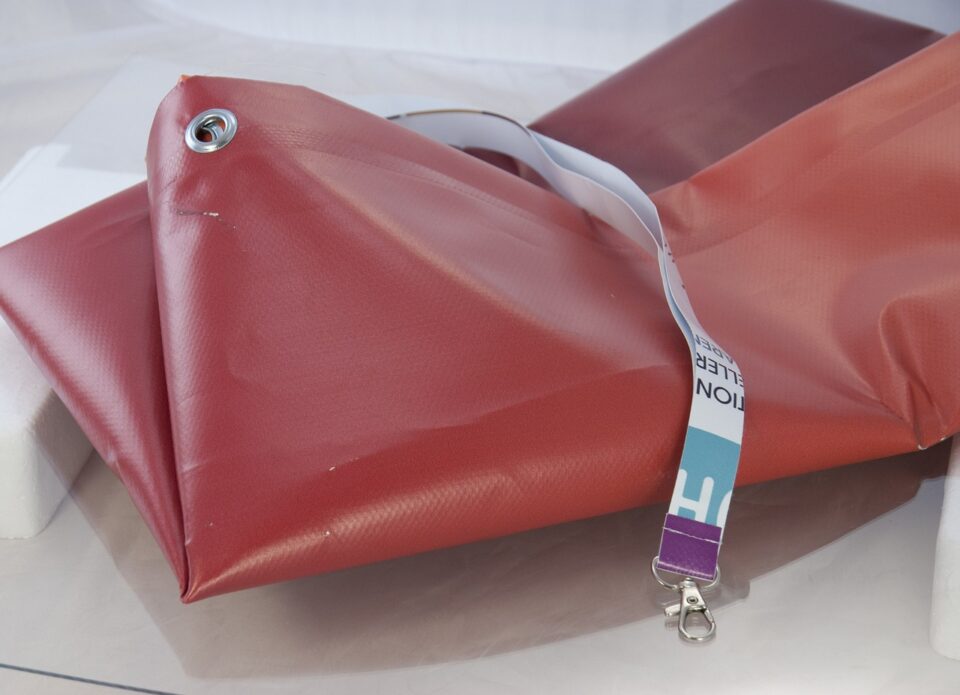If you live in a village or a town (Rural or Semi urban) area, you would not be unfamiliar with Tarpaulin or Tirpal. People living in cities must have seen a lot of use of Tirpal. Its demand is highest in monsoon.
Highest sales in rainy season
Tarpaulin and similar products are sold in abundance during the rainy season. Tarpaulin is widely used in grain, cement and sugar mills. Also, those who have kutcha houses and shelter in slums, they spend all their lives with the help of black foil or tarpaulin. The covers of trucks and lorries are also made of tarpaulin or canvas. Rain coats are also made from PVC coated canvas or plastic. The sale of all these products is plentiful in the rainy season.
Different types of tarpaulins
Generally you would have seen khaki colored canvas tarpaulins. But apart from this, different types of tarpaulins are also made and sold. For example, black foil is used in the roofs of kutcha houses. It is cheap, so does not last long. In this, HD Fabric tarpaulin is sold the maximum, up to 90 percent.It is mostly used in grain warehouses, cement, tents, pandals or in the mountains. Apart from this, the traditional canvas tarpaulin, which has the best quality, is also the most expensive. But it lasts for a long time. It is widely used in making waterproof pandals, covering grains or cement etc.
Tarpaulin is needed all over the country. It is mostly used in hilly areas. It also rains a lot there. From Srinagar, Kargil to the agricultural plains below, there is a great need for tarpaulin.
What is the rate?
Rates are decided according to the size and quality of the tarpaulin. Tarpaulins are available in the market ranging from Rs 100 to Rs 5,000. Canvas is available from Rs 30 per meter to Rs 100 per meter. Whereas plastic sheets will be available for Rs 45 per kg to Rs 100 per kg. Motor vehicle covers are sold from Rs 350 to Rs 2,000 depending on the size and model.
Delhi is the country’s largest tarpaulin market
Delhi is the biggest market for tarpaulin and its related accessories in the country. There is a big business of tarpaulin here in Azad Market. There many companies and traders from all over the country come to shop.
FAQs:
Q: What are tarpaulins primarily used for during the monsoon season?
A: Tarpaulins are widely used during the monsoon season to provide protection against rain and moisture. They find applications in industries like grain, cement, and sugar mills, as well as in housing for those with kutcha houses and slums.
Q: What are the different types of tarpaulins available in the market?
A: Tarpaulins come in various types, including khaki-colored canvas, black foil, HD Fabric tarpaulin, and traditional canvas. Each type serves specific purposes based on its durability and cost-effectiveness.
Q: Why is HD Fabric tarpaulin popular, and where is it commonly used?
A: HD Fabric tarpaulin is favored for its strength and durability. It is frequently used in grain warehouses, cement storage, tents, pandals, and even mountainous regions due to its longevity.
Q: What are the key applications of traditional canvas tarpaulin, and why is it considered the best quality?
A: Traditional canvas tarpaulin is known for its superior quality and is often used in constructing waterproof pandals and protecting grains or cement. Its durability and weather-resistance make it a preferred choice.
Q: Where is the demand for tarpaulins highest in India?
A: Tarpaulins are needed all over the country, but their demand is particularly high in hilly areas like Srinagar and Kargil, where heavy rainfall necessitates reliable waterproofing solutions.
Q: How are tarpaulin prices determined?
A: Tarpaulin prices are determined based on factors such as size and quality. Prices can range from as low as Rs 100 to a premium of Rs 5,000, depending on these factors.
Q: Are there eco-friendly alternatives to plastic tarpaulins?
A: Yes, there are eco-friendly alternatives to plastic tarpaulins. Some environmentally conscious options include canvas tarpaulins and other biodegradable materials that are less harmful to the environment.
Q: Why is Delhi considered the largest tarpaulin market in India?
A: Delhi’s status as the largest tarpaulin market is attributed to places like Azad Market, where numerous companies and traders from all over the country converge to cater to the diverse and extensive demand for tarpaulins and related accessories.
Q: How can I maintain and clean my tarpaulin to ensure its longevity?
A: To maintain your tarpaulin, regularly clean it with mild soap and water, remove debris and stains promptly, and store it properly when not in use to protect it from prolonged exposure to the elements.
Q: Are tarpaulins suitable for other seasons apart from the monsoon?
A: Yes, tarpaulins have versatile uses and can be employed in various seasons. They are valuable for protecting against not only rain but also sun, wind, and other weather conditions, making them useful year-round in different industries and applications.

